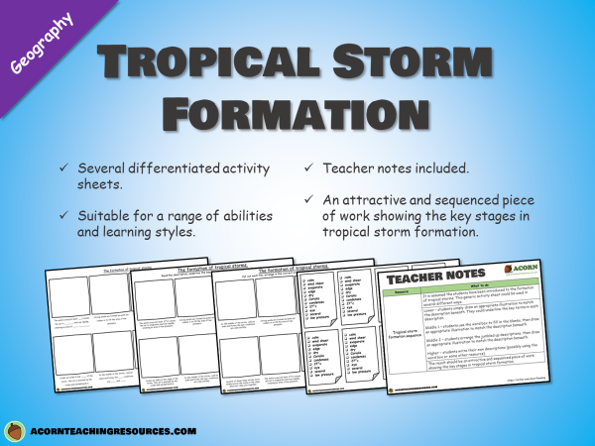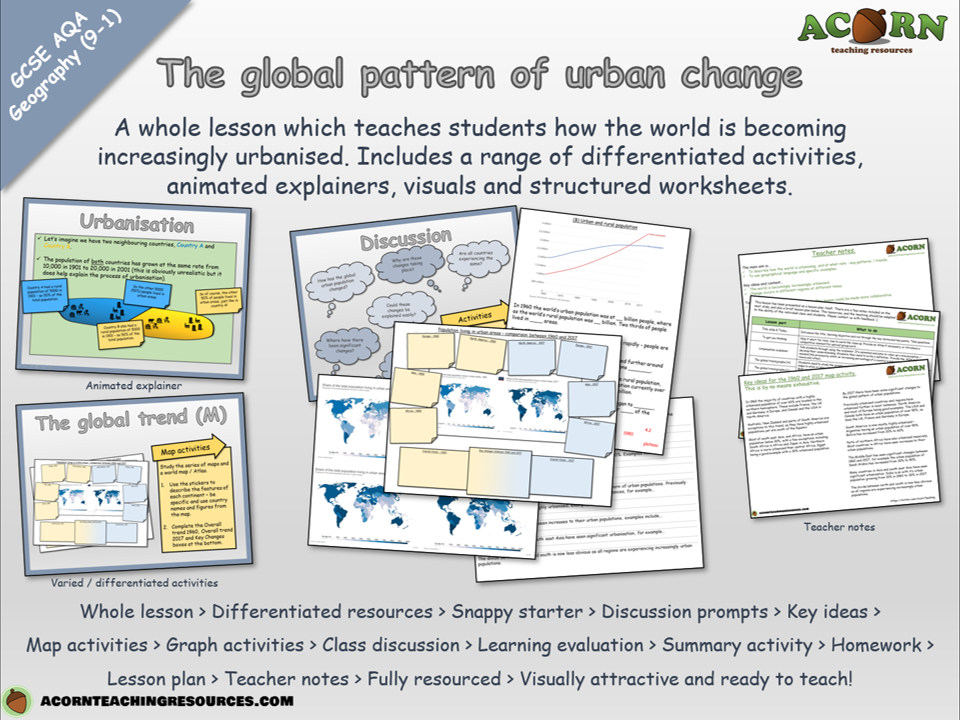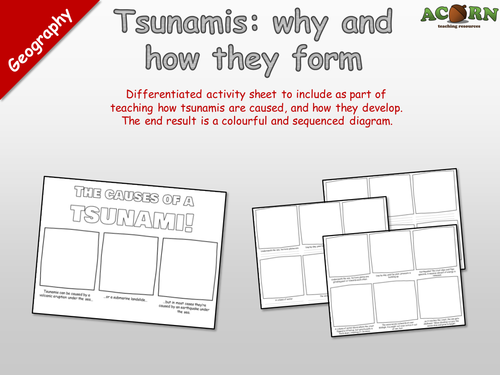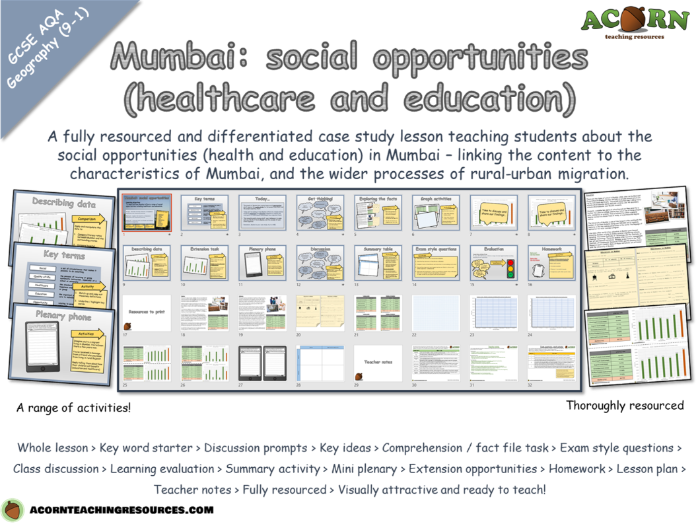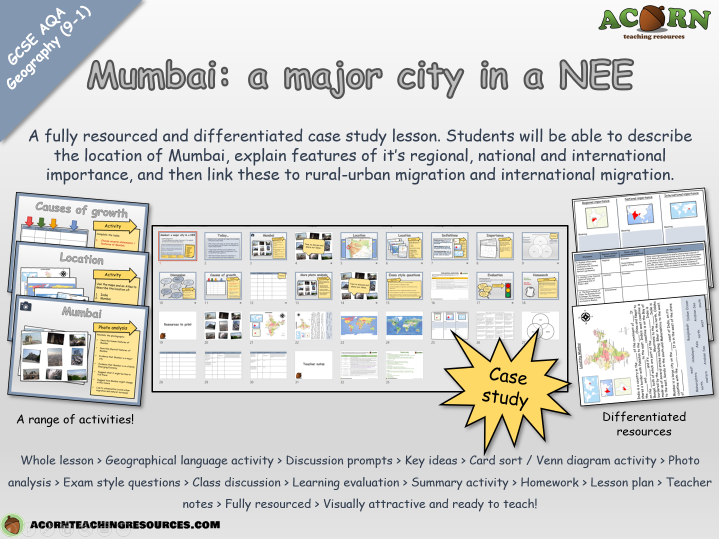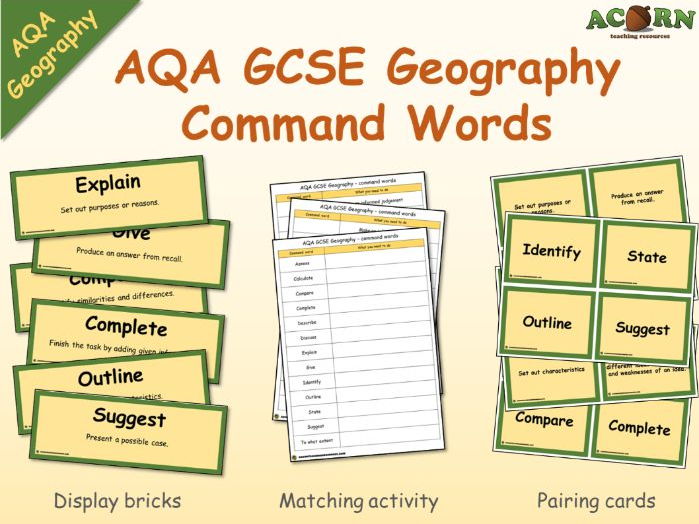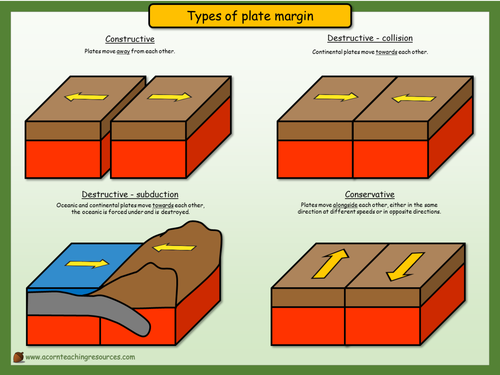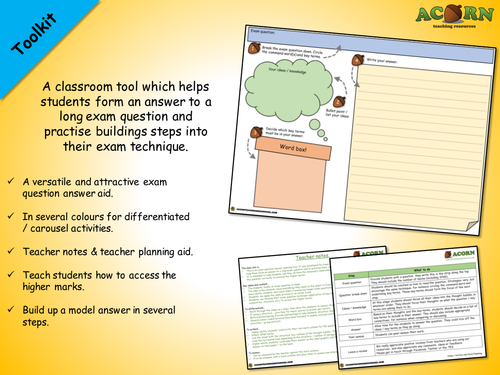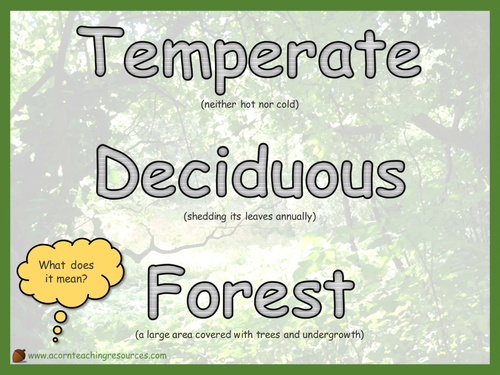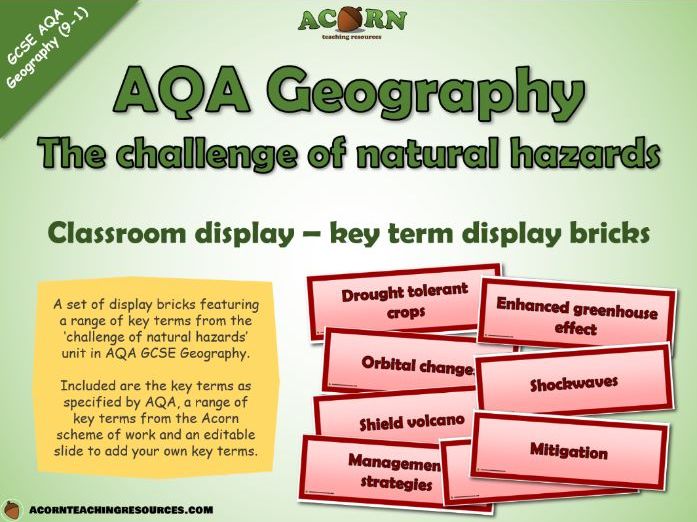103Uploads
138k+Views
51k+Downloads
Geography

Tropical storm formation - differentiated activity sheets
Several differentiated activity sheets.
Suitable for a range of abilities and learning styles.
Teacher notes included.
An attractive and sequenced piece of work showing the key stages in tropical storm formation.
This resource will help in the teaching of tropical storm formation at a range of ages and abilities.

Urban issues and challenges - The global pattern of urban change
AQA GCSE Geography - Unit 2 Section A - Urban issues and challenges - The global pattern of urban change
A whole lesson which teaches students how the world is becoming increasingly urbanised. Includes a range of differentiated activities, animated explainers, visuals and structured worksheets.
Whole lesson > Differentiated resources > Snappy starter > Discussion prompts > Key ideas >
Map activities > Graph activities > Class discussion > Learning evaluation > Summary activity > Homework > Lesson plan > Teacher notes > Fully resourced > Visually attractive and ready to teach!
The main aim is…
To describe how the world is urbanising, and at what rate - key patterns / trends.
To use geographical language and specific examples.
Key ideas and content…
The world is becomingly increasingly urbanised.
Change occurs in different regions at different times.
To differentiate…
Activities are mostly differentiated. This lesson could be made more collaborative in many areas to aid lower and middle ability students.
Model answers for higher students using L and M resources.

Urban issues and challenges - Mumbai (population growth)
GCSE Geography - Urban issues and challenges -Mumbai (population growth)
A fully resourced and differentiated case study lesson. Students explore the pattern of Mumbai’s population growth and then use information to explain the growth in the context of rural-urban migration and natural increase.
Whole lesson > Visual mind-map activity > Discussion prompts > Key ideas > Graph activities > Photo analysis > Exam style questions > Visual explainers > Class discussion > Learning evaluation > Summary activity > Homework > Lesson plan > Teacher notes > Fully resourced > Visually attractive and ready to teach!
The main aim is…
For students to describe the scale of population growth in their NEE case study of Mumbai.
To explain the growth (link to rural-urban migration and natural increase) specific to Mumbai.
To understand how rural-urban migration and natural increase are driving urbanisation in their city
Key ideas and content…
Rural – urban migration drives population growth
Population growth drives natural increase
Most migrants are young (natural increase)
Mumbai is a dominant and important city which attracts migrants (rural-urban migration)
The growth of Mumbai can be explained by a series of events in the history of the city
Rural-urban migration and natural increase are linked
NEE’s are likely to experience rapid urbanisation / population grown in cities because of their socio-economic contrasts
To differentiate…
Use the differentiated resources as appropriate.
Include discussion prompts and time the lesson accordingly
To extend…
Students can peer assess / improve their exam questions or photo analysis answers.
Change/adapt the exam style questions
Students can develop their own questions with mark schemes.
Higher ability should be given the opportunity to link the statements about Mumbai to one another
To assess…
The photo analysis offers some assessment opportunity if a focus is given to linking concept/theory to what’s happening in Mumbai
The line/bar graphs aren’t suitable in terms of content, however as a skill they could be assessed for accuracy
The exam style questions offer a summative assessment opportunity for the lesson.

The Geography of Autumn
The Geography of Autumn gives students the opportunity to explore the interaction between people & environment and the Autumn season.
Students will apply atlas skills and explore interactions including: Autumn tourism, the impacts of global warming, animal migrations and cultural celebrations.
This is a structured and visually attractive lesson where the outcome is an informative piece of display work or a booklet. There are several ways the work could be completed over a range of time scales.

Geography - Natural Hazards - How tsunamis occur
Resource 1: Drawing activity to use when teaching the causes of tsunamis.
Resource 2: Differentiated activity sheet to include as part of teaching how tsunamis are caused, and how they develop. The end result is a colourful and sequenced diagram.
All of our premium teaching resources have received a 5/5 star review (As of 22nd January 2017)
www.acornteachingresources.com

Urban issues and challenges - Mumbai (social opportunities - healthcare and education)
A fully resourced and differentiated case study lesson teaching students about the social opportunities (health and education) in Mumbai – linking the content to the characteristics of Mumbai, and the wider processes of rural-urban migration.
Whole lesson > Key word starter > Discussion prompts > Key ideas > Comprehension / fact file task > Exam style questions > Class discussion > Learning evaluation > Summary activity > Mini plenary > Extension opportunities > Homework > Lesson plan > Teacher notes > Fully resourced > Visually attractive and ready to teach!
The main aim is…
For students to explore how Mumbai offers better social opportunities in terms of healthcare and education to it’s citizens and people migrating there.
To apply specific information about healthcare and education in Mumbai.
Key ideas and content…
Mumbai offers social opportunities people cannot find in surrounding rural areas.
Healthcare and education are both much more accessible in Mumbai than in surrounding rural areas.
These opportunities drive rural-urban migration.
To differentiate…
Several resources have been differentiated so all students can take part in each activity.
Paired and group work might be appropriate for the graph work.
WAGOLLS and model answers for writing a comparison.
Peer assess the plenary phone, using something such as two stars and a wish.
To extend…
Students could remove the Mumbai hospitals from the Maharashtra state total, and explain the significance of this upon rural-urban migration. Essentially this further proves the point about access to healthcare because Mumbai props Maharashtra up in terms of number of hospitals.
Students could form sentences using the key terms from the starter.
Instead of the plenary phone, students could write a formal letter allowing for more detail and application.
Students could develop their own mark scheme for the exam style questions.
To assess…
Use the exam style questions or the discussion prompts.
The plenary phone offers a mini-plenary assessment opportunity.

Urban issues and challenges - Mumbai (location and importance)
A fully resourced and differentiated case study lesson. Students will be able to describe the location of Mumbai, explain features of it’s regional, national and international importance, and then link these to rural-urban migration and international migration.
Whole lesson > Geographical language activity > Discussion prompts > Key ideas > Card sort / Venn diagram activity > Photo analysis > Exam style questions > Class discussion > Learning evaluation > Summary activity > Homework > Lesson plan > Teacher notes > Fully resourced > Visually attractive and ready to teach!
The main aim is…
To apply knowledge of Mumbai as a case study of a city in a NEE.
To locate Mumbai using geographical language and explain features of it’s regional, national and international importance.
To link features of reginal, national and international importance together.
To explain how features of regional, national and international importance drive urbanisation in Mumbai.
Key ideas and content…
Mumbai is a city in a NEE (India), experiencing urbanisation.
Mumbai is important (regionally, nationally and internationally).
These features drive urbanisation.
Physical and human features drive urbanisation.
To differentiate…
Several activities have differentiated resources.
Provide support / model answers for the exam questions.
Photo analysis, Venn diagram and table activities could be undertaken in groups.
To extend…
Access to the internet would allow students to find out more specific facts.
Students could overlay key features of Mumbai onto a map of the city / region.
To assess…
Photo analysis
Explain and link column on the table
Group discussion
Exam style questions
www.acornteachingresources.com

Urban issues and challenges - Urban trends in different parts of the world
GCSE Geography - Urban issues and challenges - Urban trends in different parts of the world
A whole session exploring how urban trends differ between HIC’s, NEE’s and LIC’s and the relationship with economic development.
Whole lesson > Differentiated resources > Key concept starter > Discussion prompts > Key ideas > Graph analysis > Annotated graphs > Class discussion > Storyboard activity > Learning evaluation > Summary activity > Homework > Lesson plan > Teacher notes > Fully resourced > Visually attractive and ready to teach!
The main aim is…
This lesson is really about exploring the world trends – particularly the difference between urbanisation in LIC, HIC and NEE countries. Reasons and explanation are picked up in lesson 4.
Key ideas and content…
There is a clear difference between levels of urbanisation in HIC’s, LIC’s and NEE’s
There is a clear correlation between GNI and levels of urbanisation
Urbanisation is occurring more quickly in LIC’s and NEE’s
Urbanisation has already occurred in HIC’s and has slowed down
Be careful with students confusing GNI per capita with GDP
Industrialisation (as a concept) and the effect of urbanisation
To differentiate…
Several resource are differentiated.
Provide support and scaffolding as appropriate
Blow up and print the graphs for a carousel activity
To extend…
Students could locate our HIC, NEE and LIC countries on a world map and annotate to show levels of urbanisation and GNI.
Students could use the GDP graph, and a blank world map to annotate levels of urbanisation / GDP in various countries around the world.
To assess…
The homework exam question could be used in lesson as an assessment
The summary activity will demonstrate understanding / progress
All or any of the graphs can be described / explained
www.acornteachingresources.com

Urban issues and challenges - Mumbai (urban challenges - water, sanitiation and energy)
Urban issues and challenges - Mumbai (urban challenges - water, sanitiation and energy)
A fully resourced and differentiated lesson teaching students about the challenges in providing adequate access to water, sanitation and energy in Mumbai.
Whole lesson > Photo analysis > Discussion prompts > Key ideas > Differentiated activities > Summary activity > Class discussion > Learning evaluation > Card sort activity > Key term starter > Homework > Lesson plan > Teacher notes > Fully resourced > Visually attractive and ready to teach!
The main aim is…
To explore the challenges in providing water, sanitation and energy in Mumbai (case study)
Key ideas and content…
There are serious social challenges in providing water, sanitation and energy.
Water and sanitation are linked to health and social well being.
People living in squatter settlements (because of rapid urbanisation and poverty) are less likely to have adequate access to amenities such as water, sanitation and energy.
Mumbai is a good example of a city where people don’t have adequate access to amenities such as water, sanitation and energy.
To differentiate…
Work through the card sort activity as a class.
Students could complete the discussion, linking activity and photo analysis in groups / pairs.
Pass the photo analysis around, students improve each other’s work.
To extend…
Students could form their own sentence starters (and share them).
To assess…
The photo analysis and the summary activity offer assessment opportunities.
Class discussion and evaluation prompts.
www.acornteachingresources.com

Urban issues and challenges - Mumbai (social opportunities - water supply and energy)
Urban issues and challenges - Mumbai (social opportunities - water supply and energy)
A fully resourced and differentiated case study lesson teaching students about the social opportunities (water supply and energy) in Mumbai – linking the content to the characteristics of Mumbai, and the wider processes of rural-urban migration.
Whole lesson > Photo analysis > Discussion prompts > Key ideas > Storyboard activities > Photo analysis – progress check > Exam style questions > Class discussion > Learning evaluation > Summary activity > Homework > Lesson plan > Teacher notes > Fully resourced > Visually attractive and ready to teach!
The main aim is…
To explore how Mumbai offers social opportunities in the form of a water supply and energy provision
Key ideas and content…
There is a safe and reliable water supply in Mumbai (although it isn’t perfect)
There is a reliable energy supply in Mumbai
Water and energy improve quality of life
Access to water and energy is significantly better in Mumbai than in surrounding rural areas
Social opportunities drive rural-urban migration
To differentiate…
Discussion activities can be paired / completed as groups
Storyboard activities could be paired work
The card sort could be done together as a class
Peer assess / improve any of the activities
Model the ‘energy’ storyboard on the water format
To extend…
Higher ability students could write a letter / report about water and energy provision, instead of the storyboards.
Students could write a mark scheme for the exam style questions
To assess…
Use the exam style questions
Assess discussion prompts
The summary table could be an assessment opportunity
www.acornteachingresources.com

GCSE - AQA Geography - Command Words
Includes a set of display bricks, a set of pairing cards and a matching activity sheet for students to fill in. These are the command words as dictated by AQA for the new GCSE geography specification.

Geography - Display - Types of plate margin
Print in A3
A simple wall display to show the direction of plate movement.
www.acornteachingresources.com

Exam question technique sheet
The main aim is…
This is an exam question answer planning tool. It was developed for lower ability students; to help them form an answer to a long exam question and to practise their exam technique.
It is intended to help students see they do have the necessary understanding, but also answer the question correctly to achieve the higher marks.
Key ideas and content…
The students tackle an exam question in steps.
The idea is the students have everything they need on the sheet in front of them, to help focus lower ability students and coach them in answering longer exam questions.
Students can apply the same process to an actual exam.
Students can develop their exam question technique (application of key terms, use of connectives, structure etc.) to access the higher marks.
To differentiate…
Work through the steps as a class, then allow the students to answer the actual question.
If using a structure – give time for teach section (a minute per mark?).
Before photocopying, provide subheadings to help students structure their answer.
Several colour coded versions have been included to enable carousel activities / differentiated activities / group work etc.
To extend…
Higher ability students could write their own mark scheme for the question on the back.
Attach SPaG marks.
Use the sheet with the ‘structure’ box instead of the thought bubble. The students will have to draw the horizontal lines depending on the structure / number of paragraphs.
Higher ability students could plan their answer on the lined graphic, and then write their actual answer on lined paper / on the back.
To assess…
Can be assessed by the teacher against the mark scheme.
Provide students with a mark scheme and allow them to assess/see where the marks come from.

Geography - Geographical skills - Sketching wall display
Wall chart with a step by step guide to sketching - aimed at GCSE geography but appropriate to KS3 as well.
Print in A3.
The full lesson is available at:
https://www.tes.com/teaching-resource/geography-geographical-skills-sketching-field-and-from-photos-11486934

Geography - Rivers - Processes of transportation - Posters
2 posters in PDF intended for use as either a resource or classroom display. Print in A3.
www.acornteachingresources.com

Geography - Key term bricks - Urban issues and challenges
A set of display bricks featuring a range of key terms from the ‘urban issues and challenges’ unit in AQA GCSE Geography.
Included are the key terms as specified by AQA, a range of key terms from the Acorn scheme of work and an editable slide to add your own key terms.
www.acornteachingresources.com

Geography - Display - Temperate Deciduous Forest definition
Print in A3 and stick on the wall somewhere.

Geography - key term bricks - The challenge of natural hazards
A set of display bricks featuring a range of key terms from the ‘challenge of natural hazards’ unit in AQA GCSE Geography.
Included are the key terms as specified by AQA, a range of key terms from the Acorn scheme of work and an editable slide to add your own key terms.
www.acornteachingresources.com

